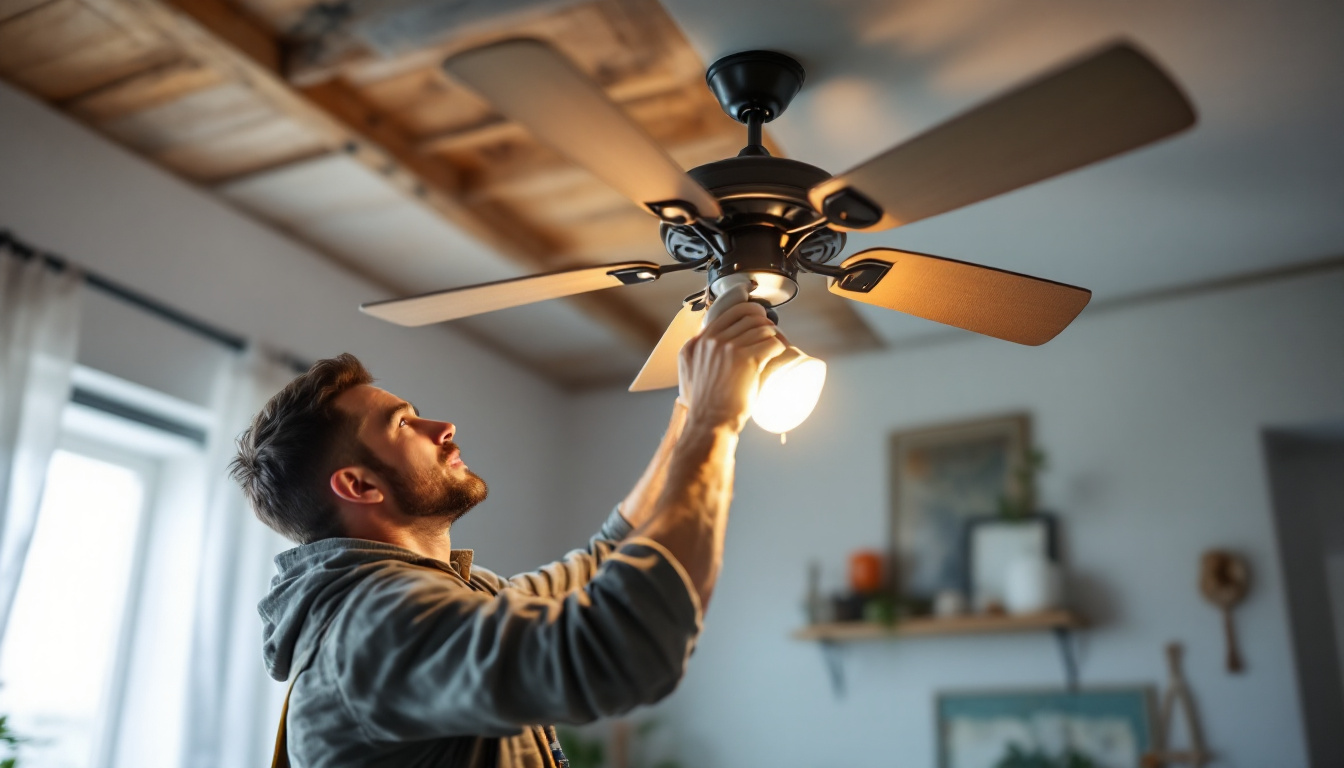
In the world of lighting installation, the importance of light switches often goes overlooked. However, they play a crucial role in both functionality and aesthetics. For lighting contractors, understanding the best practices for selecting and installing light switches can greatly enhance the quality of their work and the satisfaction of their clients. This article delves into the best practices for light switches, providing insights that can elevate any lighting project.
Before diving into installation practices, it’s essential to understand the various types of light switches available. Each type serves a unique purpose and can significantly impact the overall functionality of a lighting system.
Single-pole switches are the most common type used in residential settings. They control a single light fixture from one location, making them straightforward and easy to install. When working with single-pole switches, ensure that the wiring is correctly connected to avoid any electrical issues.
For optimal performance, it is advisable to choose high-quality switches that can withstand frequent use. This not only enhances durability but also minimizes the need for replacements, which can be a hassle for clients. Additionally, single-pole switches come in various styles and finishes, allowing homeowners to match them with their interior decor. Whether opting for a classic toggle switch or a modern rocker design, the aesthetic appeal can elevate the overall look of a room.
Three-way switches are ideal for controlling a light fixture from two different locations. This is particularly useful in larger rooms or hallways where convenience is paramount. When installing three-way switches, it’s crucial to understand the wiring configuration, as improper connections can lead to malfunctioning systems.
Incorporating three-way switches into a lighting design can significantly improve user experience. For contractors, educating clients about the benefits of these switches can lead to more informed decisions and greater satisfaction. Furthermore, three-way switches can be combined with dimmers, allowing for even greater control over lighting levels in a space. This flexibility is especially beneficial in multi-purpose areas, where lighting needs may change throughout the day or for different activities.
Dimmers offer a versatile solution for controlling light intensity, allowing users to set the mood for any occasion. They are particularly popular in dining areas, living rooms, and bedrooms. When selecting dimmers, it’s essential to ensure compatibility with the type of bulbs being used, as not all dimmers work with LED or CFL bulbs.
Installing dimmers can be a selling point for contractors, as they add a touch of luxury and customization to any lighting scheme. Demonstrating how dimmers can enhance the ambiance of a space can help clients appreciate their value. Moreover, dimmers can contribute to energy savings by allowing users to reduce light levels when full brightness is unnecessary. This not only extends the lifespan of light bulbs but also lowers electricity bills, making dimmers an eco-friendly choice that aligns with sustainable living practices.
Proper installation of light switches is critical for ensuring safety and functionality. Following best practices can prevent common issues and enhance the overall quality of the installation.
Adhering to local electrical codes is non-negotiable for any lighting contractor. These codes are designed to ensure safety and reliability in electrical installations. Familiarizing oneself with the local regulations can prevent costly mistakes and ensure compliance.
Contractors should also stay updated on any changes to electrical codes, as this knowledge can enhance their credibility and professionalism. Regular training and workshops can be beneficial in keeping abreast of the latest standards. Moreover, understanding the rationale behind these codes can empower contractors to make informed decisions during installations, ultimately leading to safer and more efficient electrical systems.
Investing in high-quality switches and wiring materials is essential for long-lasting installations. Cheap materials may save money upfront but can lead to frequent replacements and repairs down the line. Contractors should prioritize quality over cost to ensure client satisfaction and minimize callbacks.
Additionally, using reputable brands can provide peace of mind for both contractors and clients. High-quality products often come with warranties, adding an extra layer of protection for the investment made in the lighting system. Furthermore, choosing materials that are energy-efficient can also contribute to lower utility bills for clients, making the installation not only a smart choice but also an environmentally responsible one.
Proper labeling of switches and circuits is a practice that should not be overlooked. Clear labeling helps in troubleshooting and maintenance, making it easier for homeowners to understand their electrical systems. This is particularly important in complex installations where multiple switches control various fixtures.
Providing documentation, such as wiring diagrams and switch functions, can also enhance the client experience. This transparency fosters trust and demonstrates professionalism, setting contractors apart from competitors. In addition, offering a brief tutorial on how to read the labels and use the documentation can empower homeowners, giving them confidence in managing their electrical systems and reducing the likelihood of accidental misuse or confusion in the future.
While functionality is paramount, the aesthetic appeal of light switches should also be considered. A well-chosen switch can complement the overall design of a space, adding to its visual appeal. The right light switch can transform an ordinary room into a stylish haven, reflecting the personality and taste of its inhabitants. As such, it’s essential to view light switches not merely as functional devices but as integral components of interior design.
Light switches come in various styles, from traditional toggle switches to modern touch-sensitive panels. Contractors should consider the overall design theme of the space when recommending switch styles to clients. For instance, sleek, minimalist switches may work well in contemporary settings, while ornate switches can enhance the charm of traditional interiors. Furthermore, the choice of switch style can also affect the user experience; for example, a dimmer switch can add versatility to a room, allowing for varying levels of light to suit different moods and activities.
Additionally, offering a selection of finishes, such as brushed nickel, matte black, or classic white, can provide clients with options that align with their personal tastes and existing decor. Beyond just finishes, the texture of the switch can also play a significant role in the overall feel of the space. Textured switches can add depth and interest, while smooth surfaces can evoke a sense of modernity and simplicity.
Color coordination is another crucial aspect of enhancing the aesthetics of light switches. Matching switch colors to the wall or surrounding fixtures can create a seamless look. Conversely, using contrasting colors can make a statement and serve as a design focal point. This technique can be particularly effective in spaces where the switches are prominently displayed, such as in open-concept living areas or near entryways.
Contractors should engage with clients about their preferences and help them visualize how different color options can impact the overall ambiance of the space. This collaborative approach can lead to more satisfying outcomes. Additionally, incorporating color theory can be beneficial; for instance, warm colors can create a cozy atmosphere, while cool colors may promote calmness and relaxation. By understanding the psychological effects of color, contractors can guide clients towards choices that not only look good but also feel right in their homes.
The rise of smart home technology has introduced a new dimension to light switches. Smart switches offer enhanced control and convenience, allowing users to manage their lighting systems remotely through smartphones or voice-activated devices.
Smart switches provide numerous benefits, including energy efficiency, convenience, and customization. Users can program lighting schedules, adjust brightness levels, and even control lights while away from home. This level of control not only enhances comfort but can also lead to energy savings.
For contractors, recommending smart switches can position them as forward-thinking professionals who are in tune with modern technology trends. Educating clients about the benefits and functionalities of smart switches can lead to increased sales and client satisfaction.
Installing smart switches requires a different approach compared to traditional switches. Contractors must ensure that the existing wiring is compatible with smart technology. Additionally, understanding the specific requirements of various smart switch brands is essential for a successful installation.
Providing clients with guidance on setting up and using smart switches can enhance their experience and minimize confusion. Offering post-installation support can also lead to positive reviews and referrals, benefiting the contractor’s reputation.
Regular maintenance and troubleshooting are vital for ensuring the longevity and functionality of light switches. Contractors should educate clients on how to care for their switches and identify potential issues.
Encouraging clients to conduct routine inspections of their light switches can help identify problems before they escalate. Signs of wear, such as flickering lights or unresponsive switches, should be addressed promptly to prevent safety hazards.
Contractors can provide clients with a checklist for routine inspections, outlining what to look for and when to seek professional assistance. This proactive approach can enhance client relationships and demonstrate a commitment to quality service.
Common issues with light switches include flickering lights, switches that feel loose, or switches that do not operate at all. Educating clients on how to troubleshoot these problems can empower them and reduce unnecessary service calls.
For example, a flickering light may indicate a loose connection or a faulty bulb. Instructing clients on how to check these components can save time and resources. However, contractors should always emphasize the importance of professional assistance for complex electrical issues.
Light switches are a fundamental aspect of any lighting installation, influencing both functionality and aesthetics. For lighting contractors, understanding the various types of switches, installation best practices, and the latest technology can significantly enhance their work.
By prioritizing quality materials, adhering to local codes, and offering aesthetic options, contractors can create lighting solutions that not only meet but exceed client expectations. Embracing smart technology and providing ongoing support further solidifies a contractor’s reputation as a knowledgeable and reliable professional in the lighting industry.
Ultimately, investing time and effort into mastering the art of light switch installation can lead to more successful projects, satisfied clients, and a thriving business in the competitive world of lighting contracting.
Ready to elevate your lighting installations with the best switches on the market? Look no further than LumenWholesale for all your lighting needs. Our extensive selection of top-quality, spec-grade lighting products comes at unbeatable wholesale prices, ensuring you get the most value for your investment. Say goodbye to local distributor markups and hello to superior lighting products that meet the highest industry standards. Plus, with free shipping on bulk orders, you can stock up on premium lighting without worrying about hidden fees or compromises. Don’t miss out on the perfect blend of quality, affordability, and convenience. Visit LumenWholesale now for wholesale lighting at the best value and make your next project shine!

Discover how lighting motion sensors are revolutionizing the work of lighting contractors by enhancing efficiency and reducing energy consumption.

Discover expert tips and insights for lighting contractors on selecting and installing solar outdoor light posts.

Discover the illuminating truth about 4000 lumens in this insightful guide for lighting contractors.

Explore how ceiling fan switches influence the workflow and decision-making of lighting contractors.